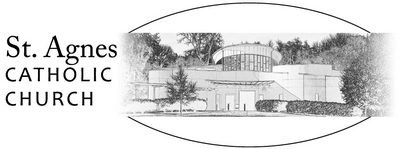Catholic Corner
March 28, 2021
What Do You Know About Passion/Palm Sunday and Holy Week?
Well, is it Palm Sunday or Passion Sunday?
The short answer is, Yes! It is both. The correct name is Passion Sunday, a name change that occurred after Vatican II. The two names for the day reflect two traditions that existed for the Sunday before Easter. 4th Century pilgrims to Jerusalem found the Church there practicing a form of liturgical “historicism.” The Jerusalem Church held Holy Week celebrations that focused on the events described in the Gospels on the sites that they believed were the actual locations for those events. Hence, on the Sunday before Easter a triumphal entry into Jerusalem was celebrated with palms and procession.
These same pilgrims, when they traveled back to Europe, brought this practice back home with them. There this practice met an already existing tradition of reading the Passion narrative on this Sunday, a tradition that had nothing to do with palms! Eventually, the palm procession was added to the beginning of the pre-existent Passion liturgy. It is this combined liturgy, called Passion Sunday that was restored with the reforms of Vatican II.
What is Triduum?
Triduum is composed of the last three days of Holy Week, encompassing the liturgies of Holy Thursday, Good Friday and the Easter Vigil. In effect these are one liturgy that occurs over the course of three days. Over these three days different facets of the central mystery of Christianity are focused upon and celebrated. And what is that central mystery you ask? It is the Paschal Mystery: the Life, Death and Resurrection of Christ, and our lives therein.
OK, then what is Holy Thursday?
To make a really long story short, on the night of Holy Thursday the Mass of the Lord’s Supper is celebrated. This is the major liturgy of Holy Thursday and it opens the Triduum (signaled by the use of white vestments and the singing of the Gloria). There are three customs associated with this celebration of the Eucharist. A) The washing of the feet, a custom that has its roots in the earliest Christian Church. B) The procession of the sacrament to an altar of repose. This dates to the 7th century and is linked to the custom that arises at that time, of receiving Eucharist on Good Friday (up until the 7th century a Eucharistic fast was maintained on Good Friday). C) The stripping of the altar.
So, then what is Good Friday all about?
The liturgy of Good Friday focuses on the Liturgy of the Word (especially the Passion), Veneration of the Cross, and Holy Communion. The elements of the Good Friday liturgy of the word reflect the earliest elements of the Roman rite including a silent procession, the readings and the ancient Roman prayers of intercession.
Veneration of the cross began in 4th century Jerusalem. Evidence for this is provided by the diary of a 4th century Spanish nun who witnessed the liturgies of Holy Week in that city. She describes a ceremony where the faithful, having walked to Golgotha to hear the Passion, then gather to venerate the wood of the cross. Finally, starting in the 7th century there follows a liturgy of the Presanctified, or Holy Communion, using the consecrated bread reserved the night before.
And the Easter Vigil?
The Easter Vigil is the high point of the liturgical year! It is certainly one of the oldest of all Christian celebrations, dating to the mid 2nd century at the latest. Its’ focus is the celebration of the resurrection of Christ and at it we celebrate the initiation of new members into the Church. St. Augustine called this the Mother of all Vigils and it was considered by the early church the only time when new members would be received into the Church. Today, as in the early Church, adults (through the Rite of Christian Initiation of Adults) enter the Church on that night, through full immersion baptism, confirmation and first Eucharist. It begins with the lighting of the Paschal fire (the roots of which go back to the Jewish custom of lighting the lamps at dusk) and the blessing of the Paschal candle (symbol of the light of Christ). This service is followed by the singing of the Easter Proclamation and the Liturgy of the Word that tells the story of our relationship with God. The Liturgy of Baptism follows, with adults being baptized and received into the Church. The Liturgy of the Eucharist then occurs as usual.
The Easter Vigil is the richest liturgy, symbolically, of the year, consisting of darkness and light, fire and flame, water (death and rebirth, new life), food and drink, and much more. To experience the Easter Vigil is to experience the depth of Christian celebration, our past and our future, the strength of our relationship with one another and with the Lord.
